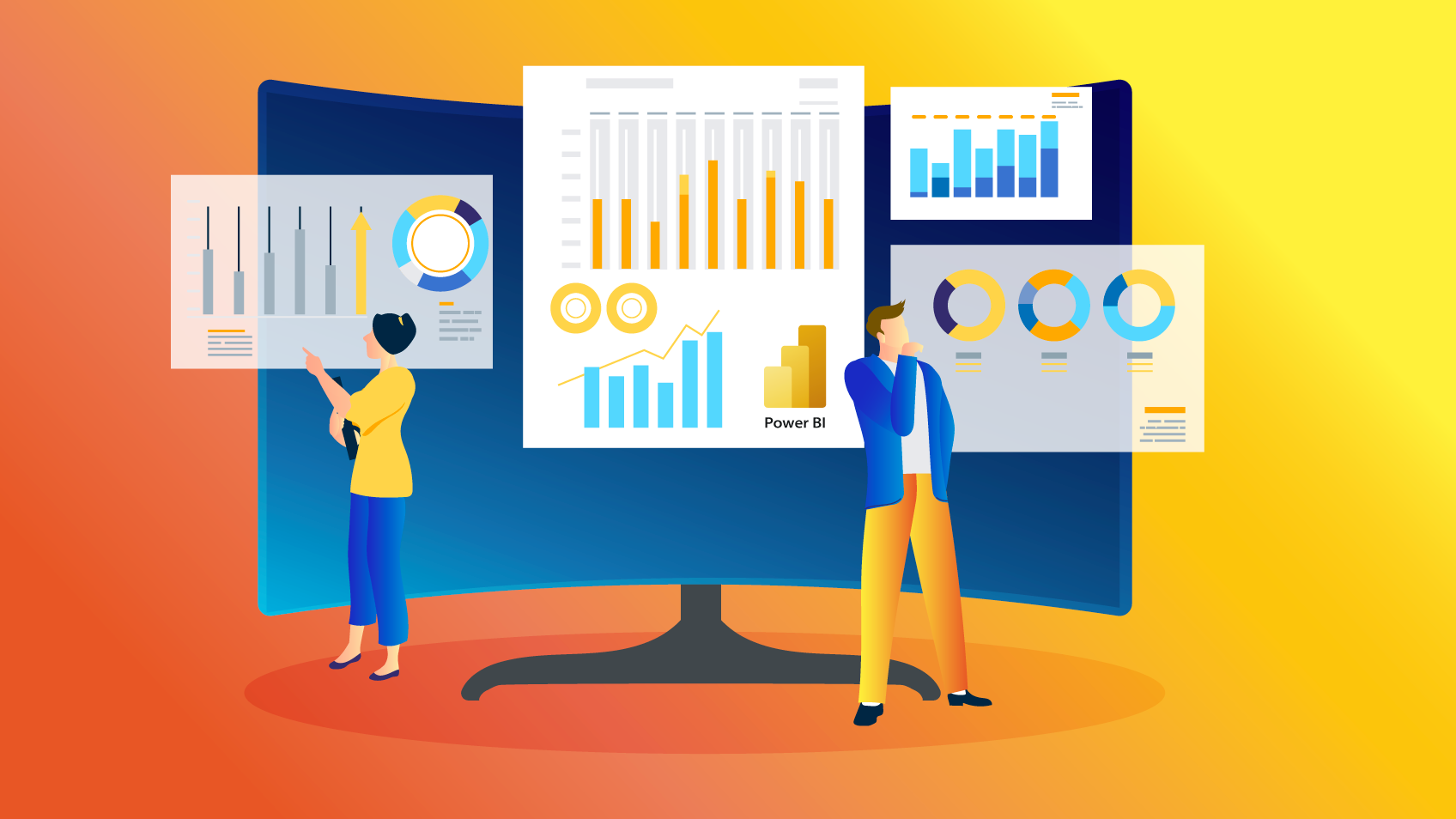Data is a valuable asset that has become an integral element of the business world. It can be used to either make or break an organization. Power BI, Microsoft Fabric and other tools that are powerful are employed by companies to unlock the full potential of their data. These platforms are at the heart of business intelligence and, when combined with Azure Data Factory they become a powerful force for data analytics and making decisions.

Power BI – Your Business Intelligence Companion
Power BI by Microsoft is a powerful business intelligence software that lets organizations visualize and share their data. Users can build interactive reports and dashboards that transform raw data into useful information.
Whether you’re a small startup or a large enterprise, Power BI adapts to your needs. It seamlessly integrates with different sources of data and makes it easy to combine data from different platforms and databases. Its intuitive drag-and drop interface even non-technical users can quickly build insightful reports and analyzes.
Power BI supports real-time processing of data, which ensures that you have up-to-date data. Power BI offers a range of visualizations, allowing you to present information in a clear, interesting manner. The capability to share and collaborate data with colleagues helps in making better decisions and creates a culture of data-driven decision-making within your business.
Microsoft Fabric The weaving of data Innovation
Microsoft Fabric is a framework that orchestrates and connects data from Microsoft services. The fabric creates a unified entity that can be utilized by companies.
Microsoft Fabric helps businesses maintain data consistency and integrity as they work with growing the volume of data. Microsoft Fabric works with a wide range of services from Azure Data Lake Storage, Azure SQL Data Warehouse, and Power BI. This integration ensures that data flows smoothly and that insights can be drawn from multiple sources.
Microsoft Fabric excels in data transformation. It is a tool to manage data to make it ready for analysis and to ensure it conforms to the policies of data governance of your organization. Microsoft Fabric is the system that guarantees that your data is secure and accurate. It is also ready for analytics.
Azure Data Factory: The Gateway to Data Transformation
Azure Data Factory is an integral part of the current world of business intelligence. It’s a cloud-based data integration tool that lets you set up, manage and schedule workflows that are driven by data. Azure Data Factory provides meaningful insight through the orchestration of data movement and transformation.
Azure Data Factory’s versatility in connecting to different sources of data is one of its key advantages. Your data can be incorporated seamlessly, whether it is located on premises, in the cloud or both. This will give you a comprehensive view of the whole data ecosystem regardless of where your data is. The platform can handle the processing of batch data, real time data streams and big data analytics. This is why it is suitable for all kinds of use cases.
Azure Data Factory offers a visual interface that makes it easier to manage the process of creating data pipelines. Even if you’re not a coder it’s easy to create plans, schedules and track data pipelines. This allows business users to take control of their data integration processes and opens the door to self-service data preparation.
The Power Trio: Power BI, Microsoft Fabric, and Azure Data Factory
If Power BI is combined with Microsoft Fabric and Azure Data Factory They form a powerful trio that could transform data analytics. These three technologies can work in synergy:
1. Data Integration Azure Data Factory connects to a variety of data sources, ensuring that your data is available. The data integration feature feeds into Microsoft Fabric, which orchestrates data across various services. It ensures your data is well-organized, clean and ready to be analyzed using Power BI.
2. Data Transformation: Microsoft Fabric plays a important role in data transformation that allows you to alter your data in order to satisfy your analytical needs. Fabric ensures that data is in the right state for analysis, whether it’s cleaning or transforming data.
3. Power BI will take over after your data is refined and is ready to be used. Power BI allows you to develop visually appealing reports as well as dashboards that make difficult data accessible. You can then communicate these insights to encourage your team to make informed decisions using data.
4. Scalability: Azure Data Factory is scalable to meet growing data volumes. Power BI combined with Microsoft Fabric can provide reliable data as your company grows.
5. Power BI and Azure Data Factory provide real-time data which are essential for making agile decisions.
The end of the article is:
In order to remain competitive in today’s business intelligence world companies need to be able leverage data efficiently. Power BI, Microsoft Fabric and Azure Data Factory are a powerful trio that can assist you in taking your business intelligence to new levels. If you’re looking for amazing visualizations, guarantee the consistency of your data, or simplify processes for data, this trio will meet your needs. Make your data more effective by utilizing business intelligence.